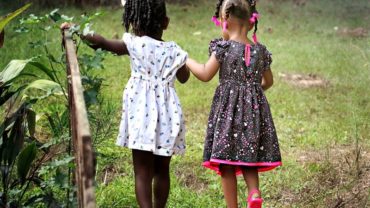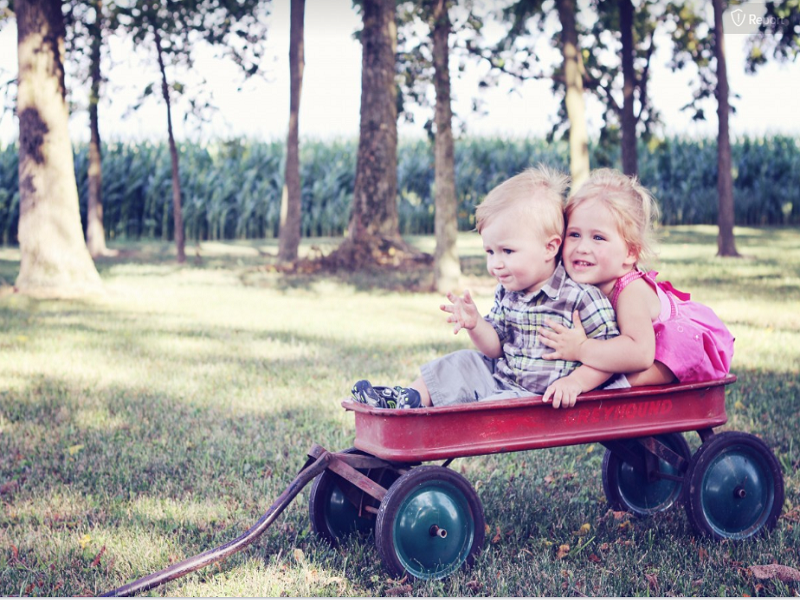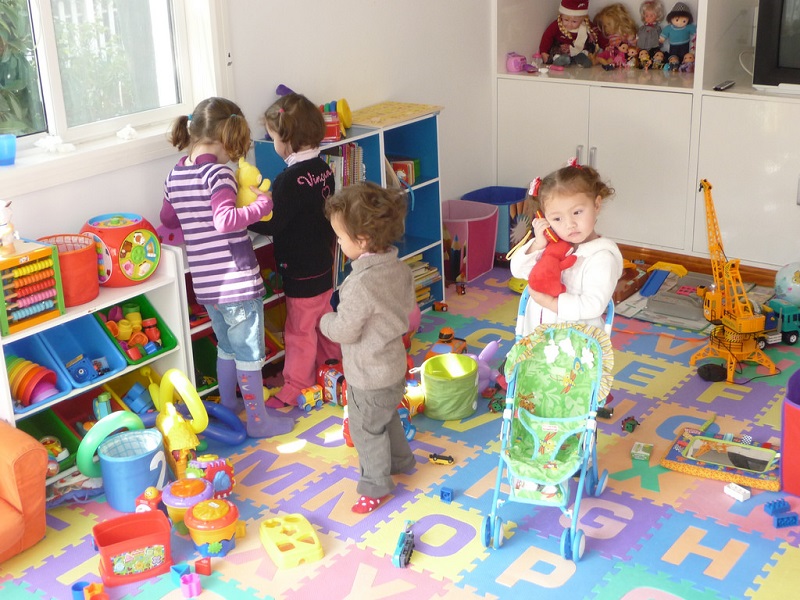via ECMHC: Daily Ideas
- Model asking others for help. If you have a task to do in the classroom, involve another child. For example, if you need to move a stack of magazines to the shelf, ask a child to help you take a stack, even if you could get it all yourself! Take the opportunity to model how to ask a friend for help.
- Whenever children have to take turns, have the child who just finished call someone to go next. This helps bridge children’s interactions with each other, rather than always being focused on the adult.
- During toileting assign each child a partner to help keep accountable to flushing and washing their hands. This keeps kids from being “tattlers” to being an accountability partner. Also, teach them to give high fives and say things like “I’m proud of you” when their partner remembers all by themselves.
- When in transition have the children pair up and hold a friends hand while walking down the hall.
- Whisper a sentence to the line leader about something that makes you happy like the game “Telephone.” The line leader will whisper to the next person and on down the line until your sentence reaches the last person. The last person will repeat the teacher’s sentence (or whatever he/she heard) out loud. Let several children help pass out plates, napkins, and utensils. Encourage them to say, “Here, (name).” and make eye contact as they pass out the supplies. The recipient should say, “Thanks, (name.)”
- Assign one child to be the “Friendship Foreman” for the day. Walk with a child to a center he/she does not usually play in and help him/her ask, “Can I play here?” Stay to help him/her enter play.
- Sit down and have a conversation with at least 3 children on the playground today about whatever they are playing with or creating. Chalk drawings, sensory tables, and outdoor dramatic play give lots of opportunities.
- Have “Buddy Time” during the first 10 minutes of outdoor play. Assign each child a buddy and encourage them to play together for at least the first 10 minutes.
Have children help during routines, such as putting out cots/mats for nap. Two children will need to work together to carry big or heavy items, and you can point out how they are being friends and working together. - When transitioning (e.g., to the playground), choose “helpers” to carry your clipboard/first aid backpack/etc.
- Talk about your own social behaviors. You can say things like, “I said ‘thank you’ to Ms. Tanya because she passed me the milk” or “I think I’ll hold the door open for Jamal, because his hands are full.”
- Identify certain items in centers that require children to help each other–taking a dollhouse off a shelf, moving the car garage, feeding the class pet–explain to children that it takes 2 friends to do these things
- Throughout the day or during a walk through the building, talk about the different ways the people you see help at school (cafeteria workers, crossing guard, director, nurse) and in the community (firefighter, teacher, police officer, doctor). Emphasize the helping nature of these jobs.
- When assigning classroom jobs, give two children each job so that they have to work together to inspect centers, pass or snack, or do whatever the duty is.
- Teach children how to greet visitors when the visit the classroom. Practice shaking hands and welcoming each other.
- In certain table activities, assign a child to be in charge of that activity for the day. When other children come to the activity, that child in charge must explain the activity to their friend and help them complete the activity
- During art, let two children draw a picture on one side of the easel together
- Put a pair of telephones in home living so the children can pretend to talk on the phone to each other.
- Pair children up in art. Give each child in the pair a different color and have them paint together on the same paper. Discuss what color they made when their colors mixed together.
- Use animals from the books that you are reading to discuss how animals live and work in groups. For example, reading a book about lions, discuss how they live together in prides. When the children work together point out to the whole class that they are acting like lions and that the whole class is like a pride.
Weekly Ideas
- Play, “There’s Somebody in the Box” to help children learn each other’s names. Take a large box and cut out the back for easy in and out. Hide one child in the box while the others have their eyes closed. Sing this song (tune – Farmer in the Dell) “There’s somebody in the box, oh who do you think it could be? We’ll take a guess, we’ll try our best, and then we’ll peek and see”. Have the children see if they know who is missing. Great for the beginning of the year!
- Start morning meeting time by having children move around the carpet greeting each other as if they are princes/princesses. Make sure they make eye contact and say words to each other. Help them get creative: they can give each other a hug, use a “royal” accent, bow and curtsy, etc. Vary the character to match your theme – the children can act like the President, a Grandma or Grandpa, a superhero, a cowboy, a firefighter, etc.
- Have a friendship spotter – make several pairs of “binoculars” with toilet paper tubes, have a child go around during center time and look for children being friends and report back to you. Share the observations in large group after center time is over.
- Give children Bingo Boards with children’s names or pictures. Make a game of playing with at least 3 different people during Center Time.
- Bring toys that require two or more people: a wagon, toss & catch game, etc.
- Make a “Friendship Board” on a bulletin board in your classroom. Take pictures when children a working together on something or playing together and put them on the wall.
- Practice partner dancing during music and movement at least once a week. This helps the children work on the different rhythms expressed by other children and synchronize their bodies. It also helps them tune into another child’s body which is imperative for children to be able to do when noticing emotions in other people.
Home Ideas
- When you sit down for meals, discuss how family-style eating and passing food is like sharing and taking turns with toys.
- Use puppets to act out different situations (e.g., one puppet takes a toy from another puppet). Ask child what happened that was not a good way for the puppets to play together. Come up with ideas of nicer ways that the puppets could have played, including ideas like sharing and taking turns.
- When leaving the house, ask the child to help you carry things. Afterward, thank them for helping.
- Talk about your own social behaviors. You can say things like, “I said ‘thank you’ to Rachel because she passed me the milk” or “I think I’ll help Uncle Larry put away the groceries.”
- Throughout daily routines outside of the house, talk about the different ways the people you see help (police officers, bus drivers, cashiers). Emphasize the helping nature of these jobs.
- Use meal preparation as a chance to practice and talk about social skills. Have children get out ingredients, set the table or stir food. Discuss how important it is to help and how much the help is appreciated.
- At any point during routines, talk about how families are like a special group of friends. Mention how you use kind words, share, and help each other just like with friends at school.
- Teach children how to act when they are meeting new people. Practice shaking hands and manners that go with introductions.
- Use animals from the books that you are reading to discuss how animals live and work in groups. For example, reading a book about lions, discuss how they live together in prides. When the children work together point out to the whole class that they are acting like lions and that the whole class is like a pride.




